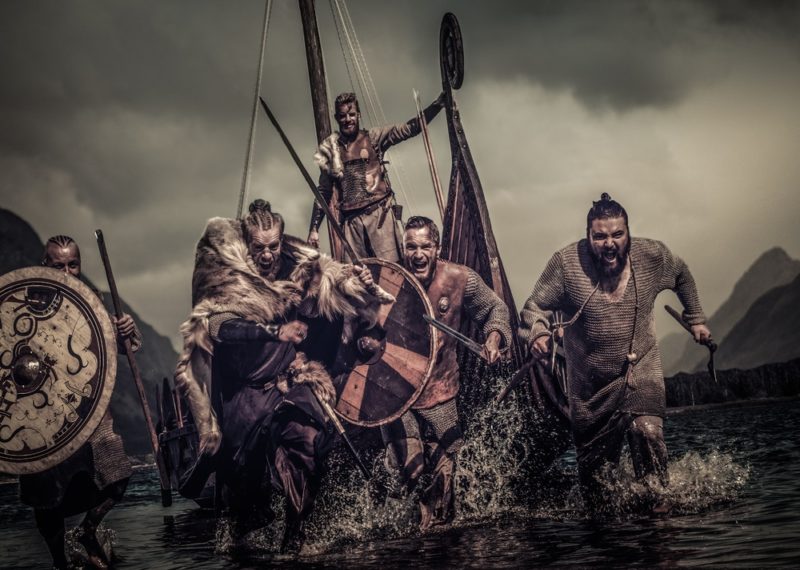Learning about the cultures that came before us is one of the most interesting hobbies you can have. Doing so helps you understand why the world is how it is now and how much it has changed over time. One of the most mysterious things to learn about the past is Viking runes.
Vikings, and even the people before and after them, used runes for a variety of things. However, many people think runic inscriptions are only used for “magic spells” or other mystic purposes, but everything goes way beyond that.
Although there are many things to know about Vikings and runic inscriptions, many people get overwhelmed by Norse culture and don’t know where to start. We can help you with that! Read on if you want to learn more about Viking runes and what Vikings and past civilizations used them for!
What Is the Runic Alphabet?
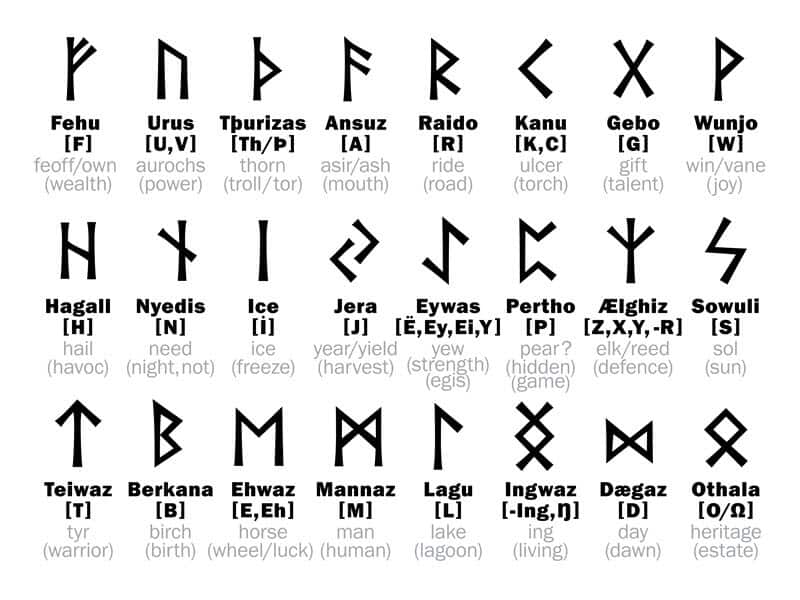
If you want to understand how runes work, you first need to know what a runic alphabet is. As its name suggests, the runic alphabet -or Futhark- was the written language or channel Germanic people had to communicate.
Regardless of that, Germanic people didn’t use runes as we use the letters of the English language or any other language in the world. Most Vikings, and the people before them, only used the runic alphabet to name things, provide protection, attract fortune, or tell historically important events.
There’s been three different runic alphabets: the Elder Futhark, Younger Futhark, and the Anglo-Saxon Futhorc. Each one of them was used at a different time, so here is a brief explanation of what each one of them represented in our history:
Elder Futhark
The Elder Futhark -also known as the Older Futhark or the Germanic Futhark- is the oldest of the runic alphabets named on this page, so it has the earliest runic inscriptions people know of. People from the Northwest Germanic region used it from the 2nd century to the 10th.
Although many think only Germanic tribes used the Elder Futhark inscriptions, some other cultures took inspiration from its inscriptions to make letters of their own. Greeks used the Gothic alphabet in the 4th century, and some of the symbols used in it come from actual Elder Futhark runes.
All runic alphabets have a different number of runes, and that number changed due to how the Elder Futhark evolved and the linguistical needs Germanic tribes had in the Viking Age. The Elder Futhark uses 24 runes.
Futhark comes in three different sets of runes, and each set has eight runes. The first one is Freyr’s Aett, and it represents runes that help people find their way in the material plane. Therefore, all runes on this set tell people things related to how they can find their life goals and true meaning.
Heimdall’s Aett is the second one, and it shows personal development, maturity, and spiritual growth. Some say this set of runes aims to help people understand upcoming changes in their lives and how different things can be when they find their true meaning and grow as people.
The last set is Haeg’s Aett. This set of runes represents the final steps in humans’ life. Therefore, it portrays how people can evolve and develop their spirituality and legacy. Although many people think of these runes as a sign of upcoming death, others prefer to see it as the accomplishment of something and the rewards that come with it.
Younger Futhark
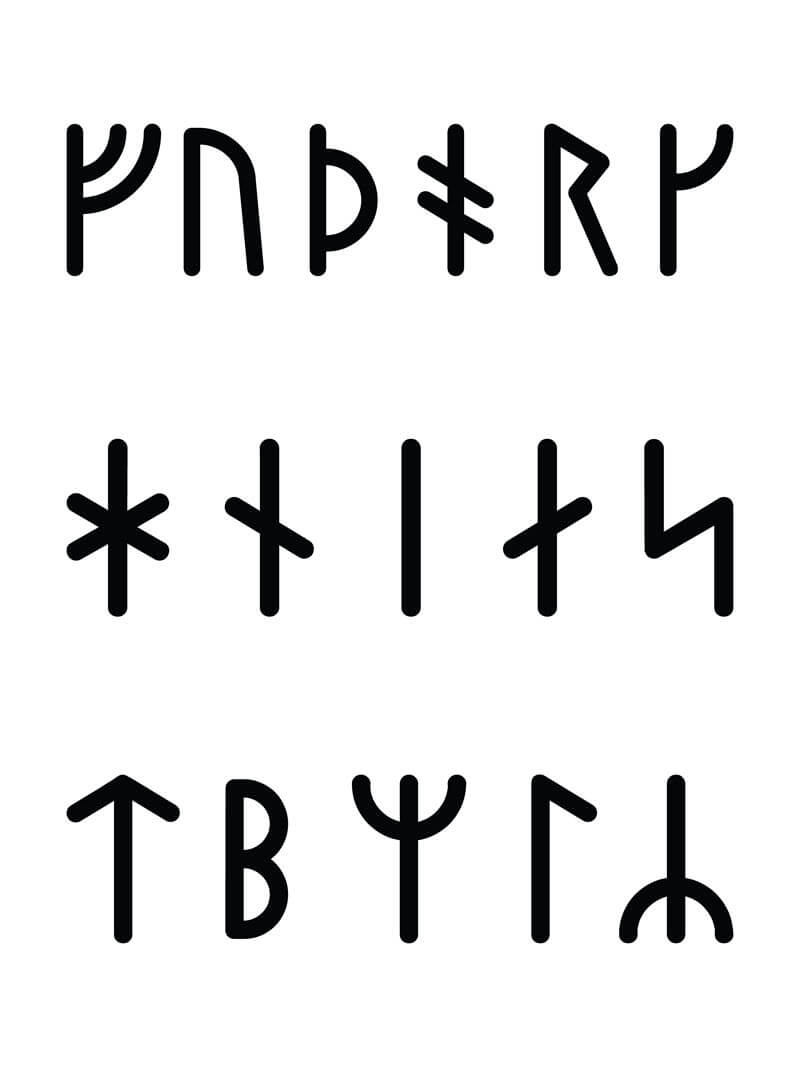
As the linguistical and communicational needs in the Viking Age increased, the language they used had to evolve, and that includes runic writing. Although this system had a third change in the future, the Younger Futhark is the most important development runic writing has had in history. The reason for it is how this language simplified old runes while expanding in semantics, pragmatics, and phonetics.
When people talk about the runes used in the Viking Age, they are more likely talking about the Younger Futhark. This language expanded to many cultures and was used by Germanic tribes and what we now know as Northern Germany.
During the Viking Age, people split the Younger Futhark into long-branch runes and short-twig runes. However, the runes in this alphabet were then expanded with hälsinge runes. Initially, the Younger Futhark had 16 runes, but that didn’t decrease the communication possibilities of people but rather simplified them in the long run.
The Younger Futhark influenced many other languages and rune systems, so it’s not weird to see symbols based on runes. Many people consider the Younger Futhark the most important writing system before the Latin alphabet. No one can take that statement lightly.
Anglo-Saxon Futhorc
The latest improvement or development the Younger Futhark had was the transition to Anglo-Saxon runes. When people switched from the Younger Futhark to this new set of runes, the Viking Era was already getting to an end, so it’s not as common as other writing systems in Norse mythology.
One of the most important things to know about these runes is that they didn’t come from the Younger Futhark since the Futhorc is a direct development to the Elder Futhark instead. What that means is that it doesn’t simplify it as the former does but expands it and increases its number of runes to 33.
This runic system was used by the early Anglo-Saxons, and it was a mere plus to their writing system. People also call these runes Anglo-Frisian runes since they were thought to be used in Frisia and Britain.
What Are Runes?
Now that you know what runic writing systems are, it’s easier for you to understand what runes are. In a nutshell, runes are what we know as letters in today’s alphabets. People in the Viking Era used them for different purposes, but they were essentially just the letters of the runic language.
Runes names represent actual words, and Vikings could use them for many things. Each symbol depends entirely on the alphabet where it comes from and can’t be used in other languages, or at least it can’t do it while having the same meaning.
As you could see, when Elder Futhark evolved, and then when the Younger Futhark developed into the medieval runes, Vikings could change rune names, symbols, and create new runes if they needed the language to evolve. Doing that wasn’t as common as it could happen with a word today, but it wasn’t something impossible.
Here are the runes of each alphabet and what each one of them means. We want you to understand everything in the easiest way possible, so the first word after each rune name represents the word the rune means, and the other ones are what it symbolizes.
Elder Futhark
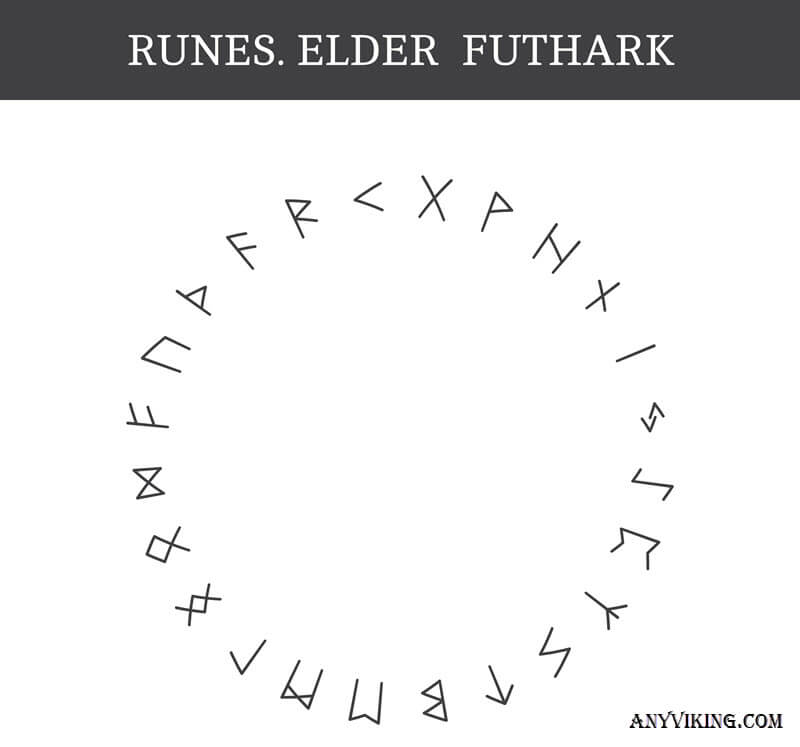
- DAGAZ: Dawn- awakening, hope
- BERKANA: Birch Tree- feminity, birth
- FEHU: Livestock -wealth, security
- GEBO: Gift -exchange, partnership
- HAGALAZ: Hail -wrath, obstacles
- URUZ: Bull- strength, freedom
- EIHWAZ: Yew Tree -balance, death
- EHWAZ: Horse- trust, movement
- OTHALA: Inheritance- heritage, value
- TIWAZ: God Tyr- justice, battle
- RAIDHO: Wagon- evolution, travel
- ANSUZ: Estuary- inspiration, the human mouth
- PERTHRO: Dice cup- chance, destiny
- ALGIZ: Elk- instinct, protection
- THURISAZ: Thom- defense, regeneration
- KENNAZ: Torch- vision, improvement
- ISA: Ice- challenges, waiting
- SOWILO: Sun- health, cleansing
- MANNAZ: Humanity- friendship, help
- JERA: Year- changes, rewards
- WUNJO: Joy-pleasure, success
- NAUTHIZ: Need- conflict, self-reliance
- INGUZ: Seed- growth, home
- LAGUZ: Water- flow, dreams
Younger Futhark
- sól: Sun
- yr: Yew
- kaun: Ulcer
- As/Oss: Norse God
- fé: Wealth
- thurs: Giant
- maðr: Man
- ár: Plenty
- týr: Norse God
- úr: Rain/iron
- ísa/íss: Ice
- reið: Ride
- nauðr: Need
- björk: Birch
- lögr: Sea
- hagall: Hail
Futhorc
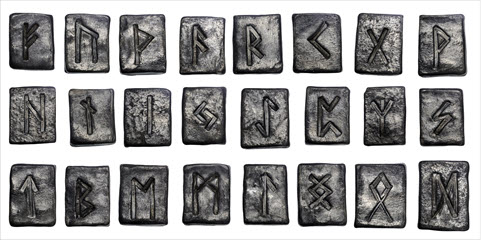
- Gar: Spear
- Cweorth: Fire
- Ear: Tomb
- yr: Bow
- Calc: Chalice
- Lagu: Lake
- Sigel: Sun
- Is: Ice
- Thorn: Thorn
- Feoh: Wealth
- Stan: Stone
- Ior: Eel
- Ing: Yngvi (Norse hero)
- Beorc: Birch
- Éðel: Property, authority
- Peorð: Peartree
- Nyd: Need, anguish
- Wynn: Joy
- Cen: Torch
- Æsc: Ash tree
- Ur: Aurochs
- Ós: Norse God
- Ac: Oak
- Rad: Horse-riding
- Gyfo: Gift
- Dæg: Day
- Hægl: Hail
- Mann: Man
- Is: Year, harvest
- Eh: Horse
- Eoh: Yew
- Tir: Norse God
- Eolh: Moose
What Were Runic Inscriptions Used for in the Viking Age?

Runes were one of the most used Germanic languages before the arrival of the Latin alphabet. As we mentioned before, runic inscriptions are what Vikings knew as writing, but they didn’t use runes in the way we use words.
People in modern civilizations use letters to form words and create complete and logical sentences. Runes, on the other hand, represent practical information about the place where they are written on. Vikings often used them to describe things or even name others. They also used them for memorials.
The problem with how people perceive runes is that they only see the stereotype of what they think a rune is, but that’s far from reality. Some runes are written to attract fortune and provide magical protection to some things. However, those uses are not that common in all regions.
Vikings even used runes to tell mythic stories about Norse mythology and stories related to it. As it happens with many words in the English language, the meaning of some runes in the three alphabets mentioned before depends on the context in which they were written.
One of the things people are most curious about when talking about runes is runestones. Due to their design, many people think runestones represent something magical or mystical related to Germanic rituals. However, they were rarely used for those things when talking about mainstream runic writing systems.
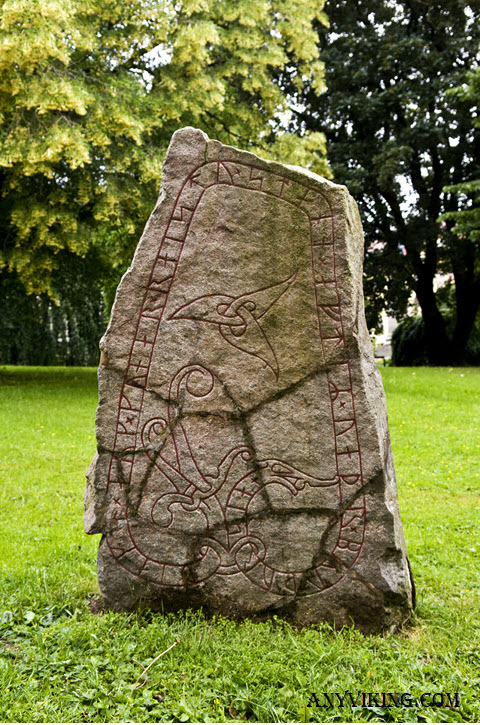
Runestones were mainly used to establish ownership of lands and territory and explain the inheritance of that place. Viking warriors also used runestones to give glory to dead warriors who died battling important battles and wars. You could say they did it to give them their respects and bring glory to their souls.
Regardless of that, we would be lying if we told you runes were never used for magic. Some evidence could lead us to believe that these runes were more than just a writing system at some times, and we mean it had magical implications.
People even used them to ask Norse Gods to help them with specific things. Some swords of that time had victory runes, and those runes were petitions to Norse Gods to ask them to bring victory to a battle. Some even say runes were for making swords, shields, and other battle equipment stronger.
Although many wouldn’t expect this to come from Vikings, some of them used runes to lay curses onto their enemies or people they wanted dead. Therefore, people associate many runes with superstition, rituals, and even death itself. Runic magic was most popular when people discovered runic divination.
There’s evidence that people use runes to try to predict the future to be ready for upcoming tragedies or important events. Runes, naturally, didn’t offer a detailed explanation of events but instead worked as tarot cards and gave a general verdict about the person asking.
The reason runic divination became that popular is that many people tried it themselves. Since nothing keeps them from doing so, they could draw runic inscriptions on stones or other things and then cast them for the divination ritual. You can go on with this process in many ways, but everything depends on how much you know about runes.
What Are Runes Used for Today?
Although it lasted many years, the Viking Age eventually came to an end. Runes were the language of Vikings and Germanic tribes, so they died out in the 15th century. Dalecarlian runes and other languages survived more years due to being influenced by the Latin alphabet.
However, people have used runes for many things today, even if they only use specific ones or don’t truly get their meaning. Some movie directors, book authors, and writers have based their stories on runes and have given them a whole new meaning in what they wrote or directed.
Runes are highly used in Tolkien’s Hobbit, which is one of the most famous books and movie sagas of our time. Apart from artistic purposes, runes also had implications in some of the roughest times in human history: Nazi Germany. The Nazi government used some runes to design Nazi symbols or flags.
Some people used those runes during that time to send secret messages to other people without the government knowing about them. However, they weren’t that common, and only a few did that since not everyone in the country understood runic inscriptions.
Conclusion
As you could see, there are tons of things to know about runes, and these are the ones humans know about so far.
People looking forward to learning more about Vikings, their mythology, and everything related to their writing systems has an endless source of information. Some historians have even made major progress just some years ago. What that means is you can already know many things of great importance about Vikings and still have a long way ahead.
Runes are always a subject that makes people think of magic, rituals, and ancient civilizations. Somehow, that’s one of the things that makes them that interesting, so it’s also good to learn about that.
Don’t feel scared to learn more about this matter, and remember you can always find more information about Vikings and their culture. Here, you can read more about it, so don’t hesitate to check out our website if you like learning about Vikings!
Q&A
We understand you may have some doubts on the matter, so here are some of the most frequently asked questions about Vikings’ runes:
Can Anyone Cast Runes?
Most people looking forward to doing runic divination make these questions. The answer is yes. There are no written restrictions or something that historically impedes someone from using runes. However, no one uses them to communicate now, so you can’t use them for that even if you know what they mean and represent.
Are Runes Dangerous?
Not at all. Being close to runes or seeing someone use them is not dangerous nor harmful in any way. Nonetheless, we don’t recommend you try anything related to curses or magic spells.
Can People Get Runes?
This is a tricky question, but the answer is yes. Runes are not something you buy or order, but you can make them yourself by drawing them on stones. Some people have even tattoed some runes to attract fortune or because they liked their meaning.


